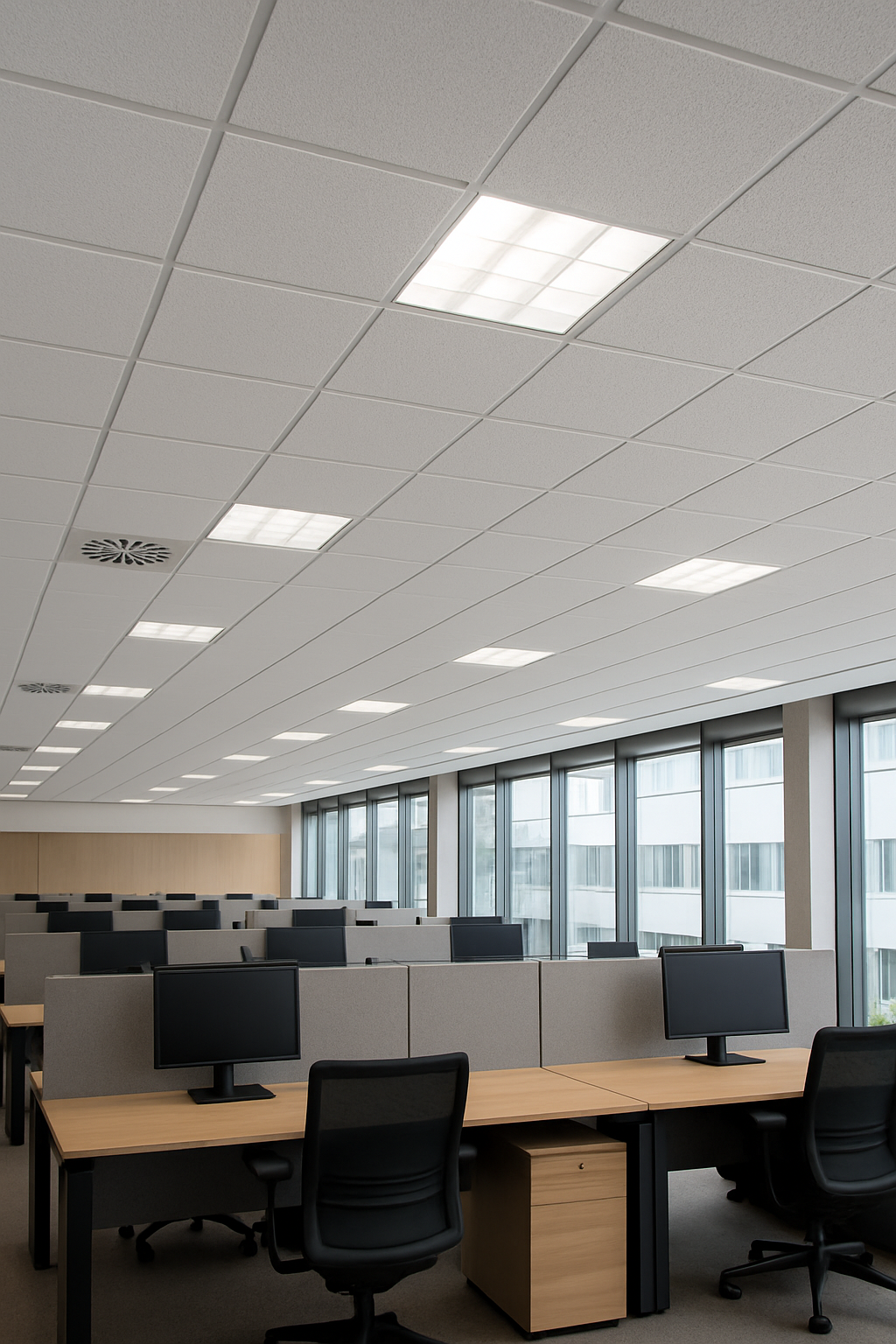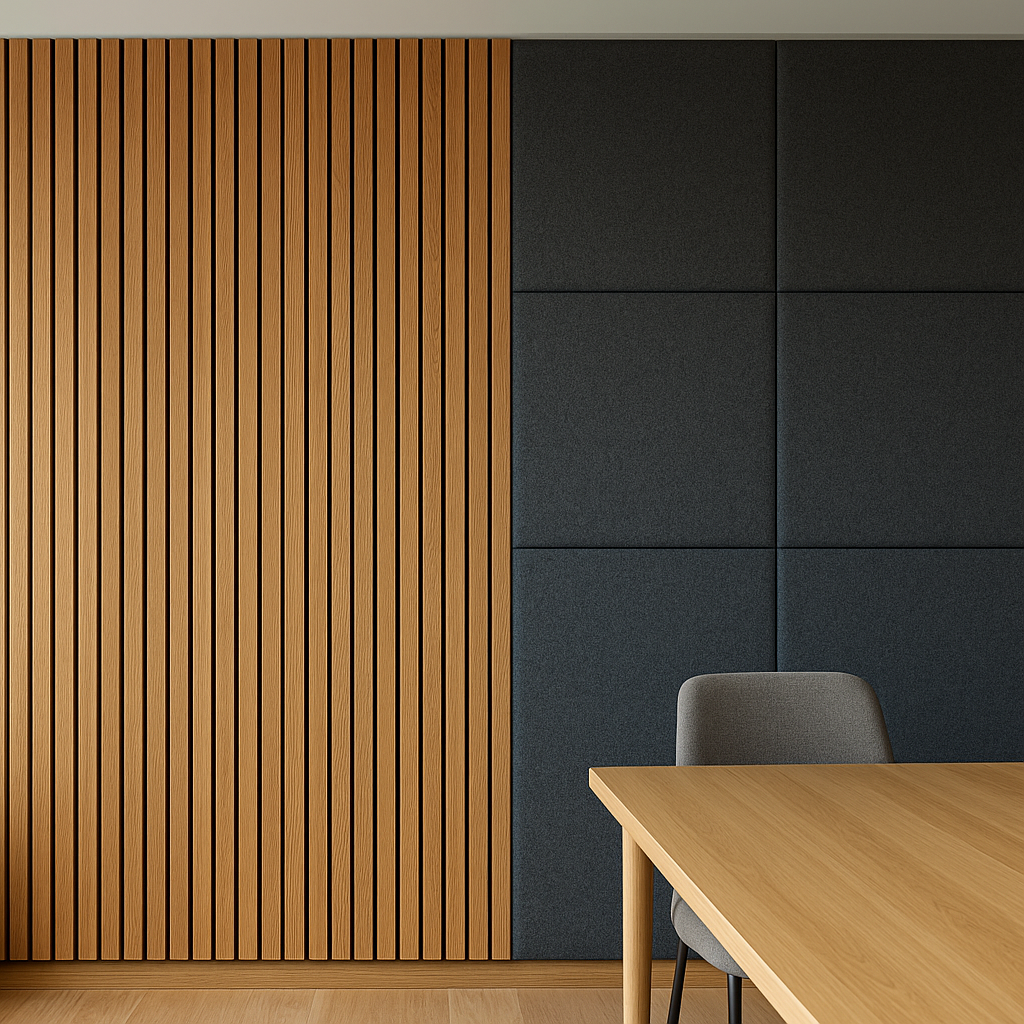Modern architecture and interior design constantly balance beauty with functionality. As spaces become more open and collaborative, controlling sound while maintaining a visually appealing environment is a top priority. This is where acoustic slat wall panels come into play—offering an elegant solution to noise control without compromising on design.
In this comprehensive guide, we explore why acoustic slat wall panels have become a go-to solution in both commercial and residential spaces, how they work, their benefits, and how to choose the right ones for your needs.
What Are Acoustic Slat Wall Panels?
Acoustic slat wall panels are decorative wood panels designed with integrated sound-absorbing materials—typically a series of wooden slats mounted over an acoustic felt backing. They serve a dual purpose: reducing echo and noise in a space while enhancing aesthetics through their modern, linear design.
These panels are commonly used in:
- Office spaces
- Living rooms and home theaters
- Restaurants and cafes
- Hotels and reception areas
- Boardrooms and meeting spaces
How Do They Work?
Sound travels in waves and bounces off hard surfaces like walls, ceilings, and floors, leading to reverberation and poor acoustic quality. Acoustic slat panels work in two ways:
- Sound Absorption: The felt backing, usually made from recycled PET, absorbs mid to high-frequency sound waves.
- Sound Diffusion: The wooden slats help scatter remaining sound energy, reducing direct reflection and creating a more balanced sound profile.
Together, this combination controls noise and improves speech clarity without requiring heavy construction or unattractive foam panels.
Key Benefits of Acoustic Slat Wall Panels
1. Noise Reduction with Style
Unlike traditional acoustic treatments that may look industrial or utilitarian, slat panels are designed to be seen. Their wooden surface adds warmth and sophistication to interiors, making them ideal for spaces where both function and form matter.
2. Wide Range of Design Options
Acoustic slat wall panels are available in a variety of wood finishes including oak, walnut, ash, birch, and black-stained veneers. The felt backing also comes in different shades to complement the front paneling.
Design flexibility allows you to:
- Match with flooring or furniture
- Use panels as a feature wall
- Install them vertically or horizontally
- Combine colors and textures for custom effects
3. Improves Speech Intelligibility
In open-plan offices or multi-purpose rooms, echoes can make conversations unclear. Slat panels absorb background noise, making speech more intelligible. This is especially useful in conference rooms, customer-facing areas, and classrooms.
4. Environmentally Friendly Materials
Most high-quality slat panels are made with sustainability in mind. The PET felt backing is often produced from recycled plastic bottles, while the wooden slats may come from FSC-certified sources.
Choosing environmentally responsible panels supports green building goals and LEED certifications while reducing your environmental footprint.
5. Quick and Easy Installation
Many panels come in modular sizes that are easy to mount using screws, adhesive, or Z-clips. Panels can be cut to fit specific dimensions or wrapped around corners and columns.
Some providers also offer DIY-friendly installation kits for residential users.
6. Versatile Applications
These panels aren’t just for walls. They can also be used as:
- Ceiling treatments
- Room dividers
- Sliding doors
- Cabinet fronts
Their lightweight design and modular format make them a flexible solution for diverse environments.
Acoustic Performance: What to Expect
Slat wall panels typically achieve an NRC (Noise Reduction Coefficient) rating between 0.75 and 0.95 depending on thickness and mounting method. This means they can absorb up to 95% of the sound energy that hits them.
Some performance factors include:
- Panel depth: Deeper panels typically absorb more sound
- Mounting type: Panels installed with an air gap perform better
- Room configuration: Open vs enclosed spaces will affect perceived results
Tip: Always ask for acoustic test data or product specifications before purchasing to ensure they meet your performance needs.
Ideal Spaces for Acoustic Slat Wall Panels
Corporate Offices
Modern offices with glass partitions and open desks often struggle with poor acoustics. Installing slat panels in meeting rooms, hallways, and behind workstations can drastically reduce noise and create a calmer environment.
Residential Interiors
In homes, slat panels elevate living rooms, hallways, or media rooms. They offer a sophisticated alternative to traditional soundproofing solutions and blend beautifully with modern and Scandinavian design themes.
Hospitality & Retail
Restaurants, hotel lobbies, and high-end retail spaces benefit from the aesthetic and acoustic improvement slat panels bring. They reduce chatter, create ambiance, and impress guests with their upscale appearance.
Studios & Creative Workspaces
For photographers, videographers, musicians, or content creators, good acoustics are non-negotiable. Slat panels create an ideal environment for recording, editing, and creative brainstorming.
Comparing Slat Wall Panels with Other Acoustic Treatments
| Feature | Slat Wall Panels | Fabric Panels | Foam Panels |
|---|---|---|---|
| Acoustics | High absorption & diffusion | High absorption | High absorption |
| Aesthetics | High-end wood finish | Moderate, customizable | Low (industrial look) |
| Durability | High | Moderate | Low |
| Eco-Friendliness | Often recycled & FSC wood | Variable | Low |
| Installation | Moderate | Easy | Easy |
Slat wall panels offer a superior balance of performance and design, especially in settings where visual appeal matters as much as acoustic quality.
How to Choose the Right Acoustic Slat Panels
When selecting slat wall panels, consider the following:
- Room Purpose: Offices, theaters, and restaurants have different acoustic needs.
- Panel Dimensions: Choose panel sizes that match the scale of your wall or ceiling.
- Material & Finish: Look for FSC-certified wood and felt backing made from recycled PET.
- Installation Method: Check if the panels are DIY-friendly or require professional installation.
- Color Scheme: Select finishes that match your design palette.
Bonus Tip: Order a sample kit from your supplier to evaluate texture, color, and acoustic thickness in person.
Maintenance & Durability
Acoustic slat wall panels are designed to last and require minimal maintenance. Here’s how to keep them looking new:
- Dust regularly using a soft cloth or vacuum brush
- Avoid moisture and prolonged exposure to direct sunlight
- Use wood polish on slats as needed to maintain their sheen
Their sturdy build and resistance to wear make them suitable for high-traffic areas.
Final Thoughts
Acoustic slat wall panels are more than just a trend—they’re a smart investment in both style and sound control. By combining beautiful natural materials with proven acoustic performance, they offer an elegant solution for improving comfort, productivity, and design in any space.
Whether you’re renovating an office, upgrading your home theater, or designing a hospitality venue, slat wall panels deliver the best of both worlds. They help you take control of your acoustic environment while making a strong visual statement.
Explore premium acoustic slat wall panels at Imagine Acoustics and discover how form and function can work together in perfect harmony.




